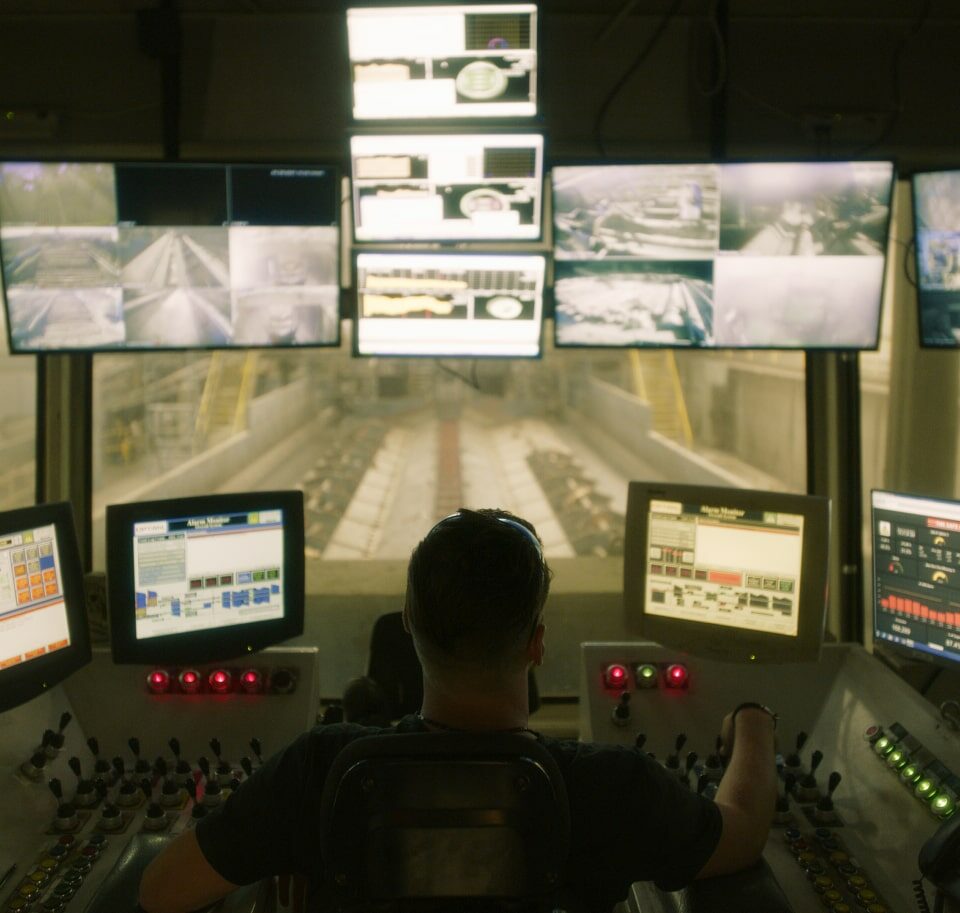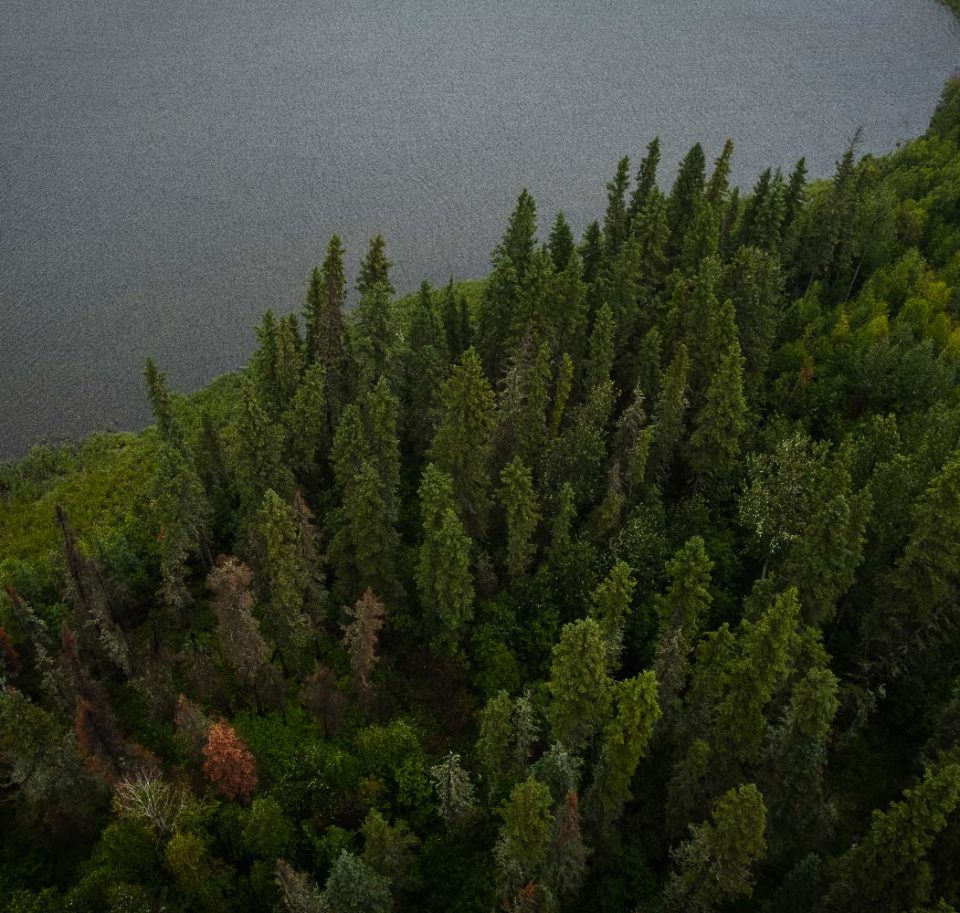
Does harvesting contribute to deforestation?
No, the forest industry in Alberta does not contribute to deforestation. When forests are managed responsibly, logging does not lead to deforestation. Moreover, there is a legal requirement for companies to reforest and monitor areas harvested on Crown land. Alberta is a global leader in sustainable forest management, with some of the most rigorous standards in the world.
That includes measures like strict regulatory limits on how much can be harvested each year, strategically planning harvests to limit environmental impact, and a requirement for forestry companies to reforest the areas they’ve harvested. Alberta’s forest industry replants three trees for every one tree it harvests, and these new forests must have the same level of biodiversity naturally-occurring Alberta forest would.
Do we have old growth forests in Alberta?
We have what we call mature forests, where most of the trees are in the later stages of their adult lifespan, but we don’t have old growth forests in the sense that some other places do. The tree species native to Alberta have a maximum lifespan of about 150 years, so a mature Alberta forest isn’t made up of trees that have lived for hundreds of years. Our trees naturally mature and die more quickly than that.
Historical fire patterns show that before large-scale human intervention, the average Alberta forest would burn and then regenerate roughly every 50-100 years. Most of Alberta’s forests would therefore be young, with smaller patches of older forest scattered in between. Thanks to measures that reduce the spread and impact of natural destructive processes like wildfire, our province has more mature forest than it naturally would, even taking harvesting into account.
How does Alberta’s forest sector help combat mountain pine beetle infestations?
In recent years, a severe mountain pine beetle infestation began in British Columbia and destroyed 40 million acres of mature coniferous forest there. Alberta’s forest industry has collaborated with the provincial government, researchers, and affected communities to contain the infestation and prevent it from spreading further east.
Aggressive surveying to map the locations of the beetle is the foundation for this mitigation work. Single-tree treatments (felling and burning infested trees) have been used wherever possible, in areas where infestation is light. Controlled burns or strategically harvesting heavily infested patches of forest and creating buffers to block the spread has helped in areas where single-tree treatments aren’t enough. These strategies have significantly limited the spread of the beetles, and the forest industry’s usual strategic harvesting also helps contain infestations. By harvesting small sections of mature forests (which are the most vulnerable to the beetle), we create buffers that make it harder for mountain pine beetles to spread from one area of mature forest to another.
How does forest management reduce fire risk?
Alberta forestry companies include measures to reduce fire risk in their planning. Older trees are at higher risk of fire catching and spreading, and since Alberta has a high proportion of mature forest, we need to do what we can to prevent and contain wildfires.
Creating buffer zones through strategic harvesting, which helps stop fire from spreading from one section of mature forest to another, is one way we mitigate fire risk. Controlled burns can also help. Some trees have adapted to release their seeds in response to fire, so we don’t want to get rid of fires entirely, but it’s important to guide where they occur and how far they can spread – uncontrolled fires pose a risk to people, communities, wildlife, and air and water quality, as well as destroying large areas of forest. Researchers, government, and the forest industry all work together on planning appropriate fire mitigation strategies.
Are careers in forestry considered green jobs?
A green job is any career that contributes to a sustainable future, and the forest industry in Alberta is 100% sustainable. Whether you are working on climate change research, developing sustainable forest management plans, planting our future forests, or helping manufacture green products, remaining sustainable and keeping our forests healthy is of the utmost importance to all of Alberta’s forest professionals.
Our sector works hard to provide Albertans with the renewable resources they rely on, while maintaining healthy forests for generations. As stewards of the forest, we take the health of our forest seriously. No matter the career path, our professionals all have common goals—addressing climate change concerns, working towards net-zero carbon, and being an example of sustainable forestry for the world.

How do I start a career in the forest industry?
This is a dynamic, varied sector that includes all kinds of jobs. Where to start depends on what kind of work you want to do, whether that’s working with heavy equipment, trees, spreadsheets, wildlife, or people. Whatever your interests, there’s probably a job for you
We’re always excited to welcome new people to the industry! If working in the forest sector seems interesting to you, we recommend checking out our partners at Work Wild. You can find information there on different job types, career paths, educational requirements, scholarships current job postings, and more.
Is the forest industry a low-tech industry?
The forest industry has been a high-tech industry for quite some time. Alberta’s forest industry works to apply innovative strategies to address the sectors challenging problems and improve current practices through consistent technological advancement. In the past, forestry professionals started their careers with no cellphones or GPS — just paper maps and a compass! Today’s forest sector is a lot more advanced. Armed with cell phones, tablets, and GPS units, it’s now much easier for foresters to review their maps, identify and mark important features like wildlife habitat or water courses, and define the harvest boundaries while on site. Our sector also uses advanced computer programs to create long-term forest plans that apply historic forest data to predict future fires or the spread of insects and diseases.
Whether we’re virtually mapping forest areas with AI or flying drones to capture regions out of reach to foresters, our sector uses the latest technology to ensure everything we do is efficient, accurate, and most importantly, sustainable.
How much do forestry companies harvest each year?
Under provincial legislation, there are set limits on how much forest area can be harvested. This proportion is always very small – less than 1% of Alberta’s total forested area – and it can change based on the current state of our forests. If a large amount of forest has recently been impacted by fire, for example, the government may decide that we need to harvest less.
The amount we harvest is much less than Alberta would lose to natural disturbances like fires and insect infestations without active forest management. Our industry works with other stakeholders to ensure we never take more than we give back. We keep Alberta’s forests sustainable by harvesting only small, strategic areas, reforesting all areas where harvesting takes place, and reducing natural risks to our forests through forest management.
Who is involved in forest management planning?
Alberta forestry companies have to submit detailed forest management plans to the Government of Alberta. These plans need to be approved by the government before a company can start work, and they need to be updated and re-approved regularly.
In making these plans, forestry companies need to consult with nearby communities and Indigenous Communities. During these consultations, people who live near and use the forests can review proposed plans and check that important features and areas of the forest are considered appropriately. The plans are made based on careful surveying and assessment of the forests, best practices developed through ecological and wildlife research, and strict requirements around harvesting limits and forest regeneration.
How does Alberta’s forest sector generate green energy?
Alberta’s forest industry works hard to be sustainable. Only a certain amount of each tree is suitable for making lumber and paper, but we’ve found innovative ways to use wood by-products made in the manufacturing process.
Green energy is one example of how we use these by-products. Leftover parts of the tree and manufacturing by-products like sawdust and black liquor can be converted into fuel for carbon-neutral energy processes that generate electricity. We don’t harvest additional trees to create these materials – they’re made from things that used to be considered waste in the manufacturing of other forest products. The energy generated with these sources is carbon neutral, since a lot of the carbon in the original tree remains stored in the lumber we made from it and the new trees we replant begin the carbon absorption cycle again.